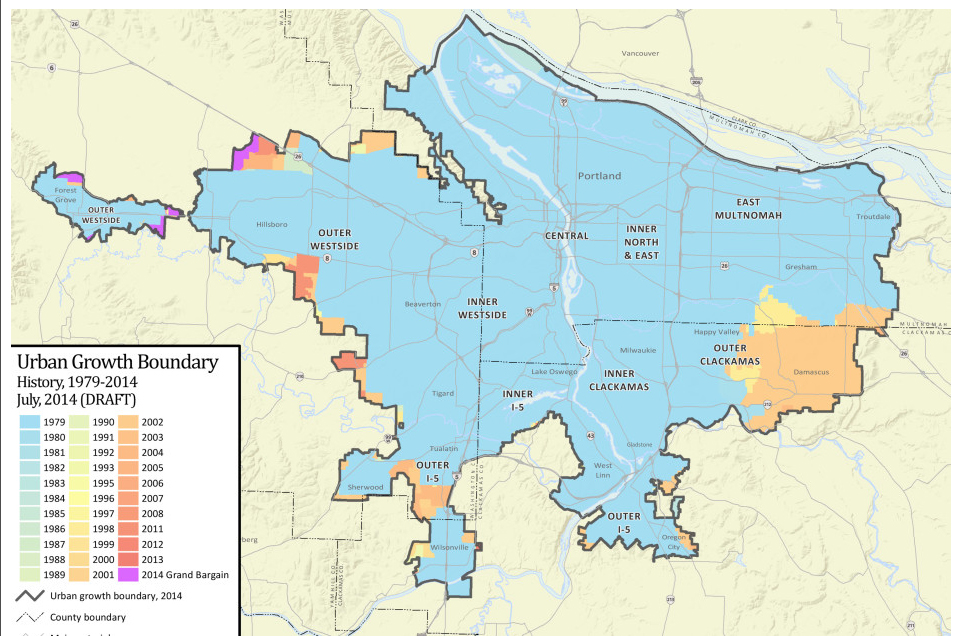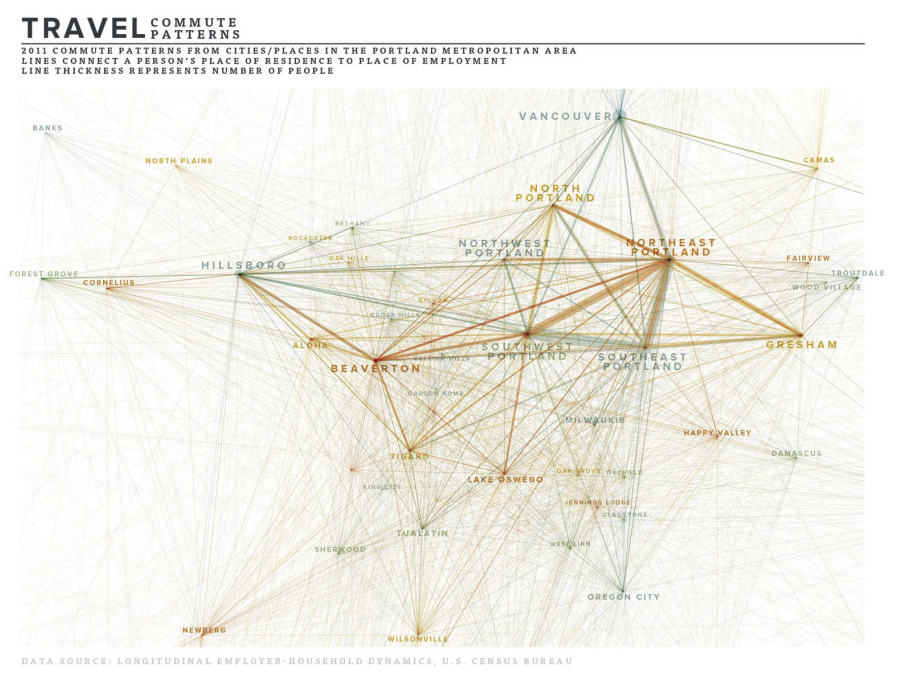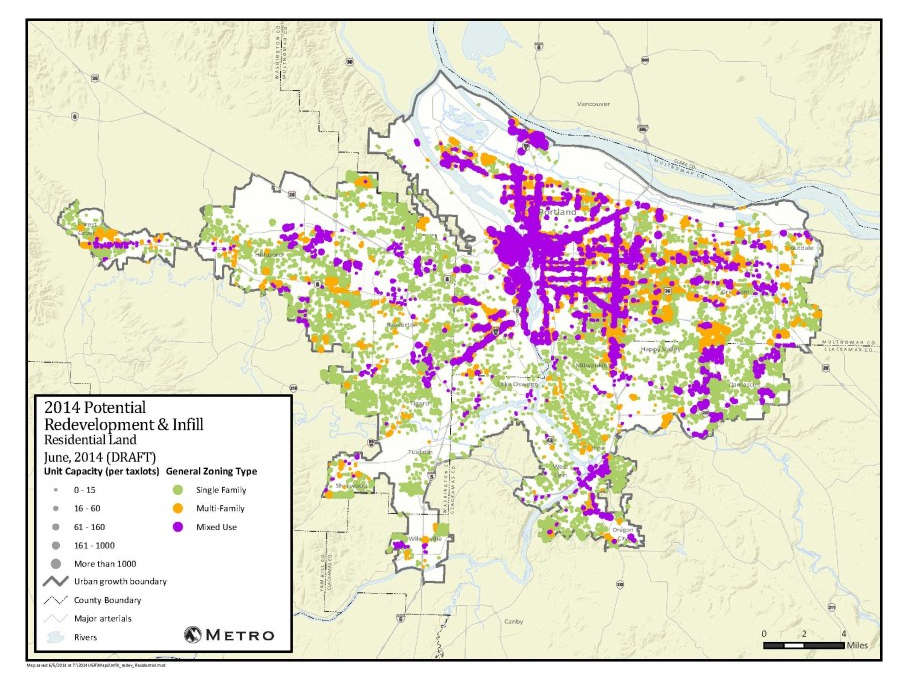A perpetual discussion in Portland revolves around the Urban Growth Boundary and the ability of the Metro region to remain compact while accommodating population growth. Proponents of density say we have plenty of room to infill without expanding, while others say expansion is the only method for having adequate land for economic development. Debate ensues.
A recent story on OPB, Report Shows Portland May Already Have Enough Room To Grow discusses a new report from Metro on growth management with and influx of approximately 400,000 residents, with 200,000 housing units and 10,000 acres for jobs. This can happen within the existing boundary, or become the catalyst
A history of boundary expansions shows how the edges of the original UGB have been added to, most notably the addition of Damascus on the outer east side. 
Commuter trends are another big issue – as regional transportation infrastructure is a key to accommodating growth – and also justify expenditures in transit and other transportation alternatives. (plus these cool infographics by Ryan Sullivan from Paste in Place make for a lot more interesting visualization than the typical charts and graphs and gis maps.)
The process is complex, and the report is a pretty good primer for anyone looking at how to manage growth, density, and the myriad factors involved in modern urban planning. The relatively massive size of Portland’s Metro Area (compared to other areas) and low density makes infill and redevelopment a key component of meeting increasing demand. While there is perhaps not tons of visible vacant lands ready to build, there is lots of potential density as seen in the potential for mixed use in the inner core. This will, as it has recently, challenge longer time residents who continue to bristle at density (such as development on Division). It also means that density needs to be done well, and that it also needs to be supported by viable transportation options.
There is also the need to rethink types of development – such as industrial lands – which has typically demanded large parcels (a constant complaint of those saying there is a lack of industrial land). While some industries do require these larger parcels, there are new models for more decentralized, modular, and mixed use industry that can be woven into (rather than be zoned separate from) adjacent residential and commercial areas.
The need for livability and economic development means living close to work, and also living in communities with access to nature, places for active and passive recreation, and a number of amenities that make a place desirable. While quality of life in some areas of the country suffer and prices skyrocket, is there possibilities to again, much like the innovative thinking that was the genesis of the urban growth boundary in the first place, for Portland to lead in how to do growth right? Could density increase and, gasp!, the UGB actually shrink?
The report shows that a significant amount of growth can be accommodated within the existing footprint, so that’s a step in the right direction.

